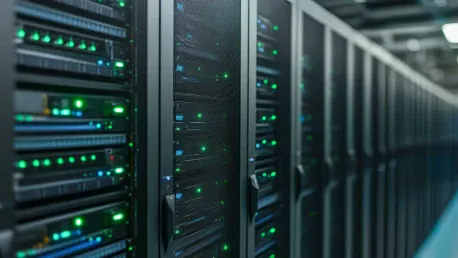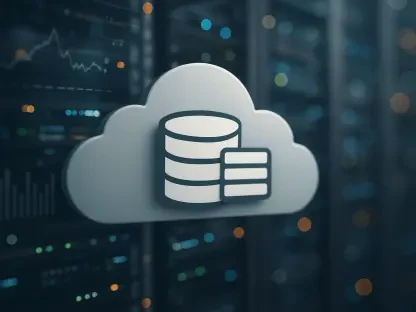Data centers are the backbone of our digital world, supporting everything from social media to cloud computing. As their importance grows, so does the need to make them more sustainable. Companies are now focusing on innovative ways to reduce their environmental impact while maintaining high performance. The push for sustainability is not just a trend but a necessity as energy consumption and environmental concerns continue to rise. By embracing renewable energy and innovative technologies, companies are leading the charge toward a greener future for data centers.
Embracing Renewable Energy Sources
One of the most significant shifts in data center sustainability is the adoption of renewable energy. Companies are increasingly turning to sources like solar, wind, and hydroelectric power to fuel their operations. This transition is crucial not only for reducing carbon footprints but also for ensuring a reliable energy supply in the face of growing demand and resource limitations. Digital Power Optimization (DPO) is one example, with its AI data center in Wisconsin Rapids powered by hydroelectric energy. This project highlights the potential of integrating renewable energy into high-performance computing and shifts the industry towards cleaner power solutions.
The involvement of renewable energy has reshaped the entire infrastructure strategy for many companies. Investing in solar panels, wind turbines, and hydroelectric plants has transitioned from an experimental phase to a standard part of data center development. Furthermore, the commitment to renewable energy demonstrates companies’ dedication to long-term sustainability goals. By reducing reliance on fossil fuels, data centers can minimize their environmental impact while providing a model for other industries to follow.
Strategic Partnerships for Green Power
Forming strategic partnerships is another key tactic in enhancing data center sustainability. By collaborating with energy providers, companies can secure a stable supply of renewable energy for their operations. Such partnerships not only provide a steady stream of clean energy but also help distribute the risks and costs associated with renewable energy projects. DPO’s partnership with CWPCo is a prime example, providing direct access to hydroelectric power. These alliances are crucial for ensuring a consistent and reliable green energy supply, demonstrating a collaborative approach to sustainability.
Partnerships extend beyond just energy providers. Collaborations with technology firms, environmental agencies, and governmental bodies can magnify the impact of sustainable initiatives. By aligning with entities that prioritize sustainability, companies can leverage new technologies, gain regulatory support, and share best practices. This comprehensive approach ensures that the transition to greener operations is not only feasible but also economically viable, promoting a shared commitment to environmental stewardship.
Innovative Cooling Solutions
Cooling systems are essential for data centers, but they are also significant energy consumers. To improve energy efficiency and reduce consumption, companies are now exploring innovative cooling solutions. Traditional cooling methods consume large amounts of energy, making them unsustainable in the long run. Innovations like liquid cooling and advanced airflow management have emerged as game changers in maintaining optimal temperatures with less energy.
These new cooling technologies offer multiple advantages. Liquid cooling, for instance, provides more efficient heat transfer compared to air cooling, thereby reducing energy usage. Advanced airflow management systems promote better circulation, minimizing hot spots and ensuring that the cooling process is more effective. These innovations contribute significantly to overall sustainability by decreasing the energy footprint of data centers. As these technologies continue to evolve, they promise further reductions in energy consumption and enhanced environmental benefits.
Energy Efficiency Measures
Beyond cooling, companies are implementing a range of energy efficiency measures. Optimizing server workloads, using energy-efficient hardware, and employing smart energy management systems are just a few examples. These measures aim to minimize energy waste and maximize performance, ensuring that data centers operate as efficiently as possible. Microsoft’s data centers, for instance, are designed with energy efficiency in mind. They use advanced monitoring and management tools to achieve optimal energy usage, setting a standard for the industry.
The drive for energy efficiency extends to the hardware and software used in data centers. Energy-efficient servers, storage devices, and networking equipment reduce power consumption without compromising performance. Smart energy management systems enable real-time monitoring and adjustments, ensuring that resources are used efficiently. These efforts reflect a broader commitment to sustainability, as reducing energy consumption is pivotal in minimizing the environmental impact of data centers.
Sustainable Infrastructure
Sustainable building practices are also playing a crucial role in revolutionizing data centers. Companies are constructing data centers with materials and designs that reduce environmental impact. From using eco-friendly building materials to implementing energy-efficient design principles, these efforts ensure that data centers are built with sustainability in mind. Prologis, for example, focuses on sustainable infrastructure for its 10 GW expansion plan. This includes using eco-friendly materials and incorporating green building certifications to minimize the environmental footprint of new constructions.
The focus on sustainable infrastructure goes beyond just construction materials. Design elements such as natural lighting, efficient insulation, and renewable energy integration are all part of creating eco-friendly data centers. By prioritizing sustainability from the ground up, companies can significantly reduce their environmental impact. These initiatives not only contribute to a greener planet but also support long-term operational efficiency and cost savings, making sustainable building practices an essential component of modern data center design.
Leveraging Existing Facilities
Another approach to sustainability is repurposing existing facilities, reducing the need for new construction and making use of already available resources. Repurposing existing buildings offers several advantages, including lower construction costs and reduced environmental impact. Core Scientific’s expansion in Auburn, Alabama, exemplifies this strategy. By utilizing the AUBix facility, they can meet growing demands without the environmental cost of building new infrastructure from scratch.
Leveraging existing facilities also fosters the notion of circular economy within the data center industry. Reusing and upgrading older buildings conserves resources and minimizes waste, aligning with sustainability principles. This approach demonstrates that significant improvements and expansions can be achieved without always resorting to new constructions, thus paving the way for more sustainable growth in the sector.
Financial Investments in Sustainability
Significant financial investments drive these sustainable initiatives, underscoring their importance. Companies are securing large sums to fund their green projects and expansions, reflecting a broader industry trend toward sustainability. JLL’s $1.2 billion financing for BlackChamber Group in Northern Virginia exemplifies this commitment. Such substantial investments are crucial for scaling up sustainable data center operations, providing the requisite capital for implementing advanced technologies and infrastructure.
These investments indicate a shift in priorities, where sustainability is seen as a key factor in long-term business success. Financial backing from investors and stakeholders emphasizes the growing market demand for environmentally responsible practices. This injection of funds helps companies develop and deploy cutting-edge solutions that enhance efficiency and reduce their carbon footprints, ensuring that sustainability is at the forefront of data center development.
Long-Term Sustainability Goals
Companies are setting ambitious long-term sustainability goals to guide their strategies and ensure continuous improvement in their environmental performance. These targets serve as a roadmap for achieving significant milestones in sustainability, demonstrating commitment to eco-friendly practices. Prologis’ aim to develop 10 gigawatts of data center capacity over the next decade is a clear example. Such long-term vision is essential for achieving substantial sustainability accomplishments.
These goals are not merely aspirational; they are concrete metrics that companies commit to achieving. They encompass various aspects of data center operations, from energy consumption and carbon emissions to water usage and waste management. By setting and adhering to these goals, companies can systematically track their progress and make necessary adjustments, ensuring that their sustainability efforts are effective and impactful.
Adapting to Technological Advances
The rapid pace of technological advancement requires companies to be flexible and adaptive in their approach. This adaptability is crucial for integrating new sustainable technologies as they emerge, ensuring that data centers remain at the forefront of innovation. Microsoft’s strategic review of its data center project in Mount Pleasant underscores this adaptability. By reassessing their plans, they can incorporate the latest sustainable technologies and practices, demonstrating a proactive approach to sustainability.
Technological advances offer new opportunities for enhancing sustainability. Innovations in energy storage, cooling systems, and data processing can significantly improve the efficiency and environmental footprint of data centers. By staying agile and open to these advancements, companies can continuously evolve their sustainability strategies, maintaining a competitive edge while contributing to environmental conservation.
Focus on High-Density Computing
High-density computing capabilities are becoming increasingly important in the quest for sustainability. These systems can handle more data with less energy, making them a key component of sustainable data centers. Investing in high-density servers and advanced computing technologies not only boosts performance but also enhances energy efficiency, providing a dual benefit of operational excellence and environmental responsibility.
The move towards high-density computing is driven by the need to maximize resource utilization. By consolidating computing power into smaller, more efficient units, data centers can reduce their overall energy consumption. This approach aligns with broader sustainability goals, as it minimizes the physical and environmental footprint of data center operations while meeting the growing demands of the digital age.
Environmental Impact Assessments
Conducting thorough environmental impact assessments is a critical step for companies committed to sustainability. These assessments help companies understand and mitigate their environmental footprint, ensuring that their data center developments are as sustainable as possible. Before embarking on new projects, companies like Overwatch Capital conduct detailed assessments to evaluate the potential environmental impact. This proactive approach ensures that sustainability considerations are integrated into the planning and development processes.
Environmental impact assessments provide valuable insights that guide decision-making. By identifying potential environmental risks and opportunities, companies can implement targeted strategies to minimize negative impacts and enhance positive contributions. This comprehensive understanding of environmental impacts enables companies to develop more sustainable data centers, aligning their operations with environmental conservation goals.
Community and Stakeholder Engagement
Engaging with local communities and stakeholders is vital for the success of sustainable data center projects. This engagement ensures that projects have a positive impact on the surrounding areas and fosters a collaborative approach to development. Companies are increasingly involving local communities in their planning processes, addressing concerns, and incorporating feedback to promote sustainable development. This approach not only enhances community relations but also ensures broader support for sustainability initiatives.
Stakeholder engagement extends beyond local communities to include investors, customers, regulators, and environmental organizations. By involving a diverse range of stakeholders, companies can ensure that their sustainability efforts are comprehensive and aligned with broader societal goals. This collaborative approach fosters transparency, builds trust, and enhances the overall impact of sustainability initiatives.
Regulatory Compliance and Standards
Adhering to regulatory standards and guidelines is essential for ensuring environmentally responsible operations. Companies must comply with local and international regulations to maintain sustainability in their data center operations. Many companies go beyond mere compliance, striving to exceed regulatory requirements and set higher standards for sustainability. This proactive approach demonstrates a commitment to environmental stewardship and positions companies as leaders in sustainable data center development.
Regulatory compliance also provides a framework for continuous improvement. By adhering to stringent environmental standards, companies can systematically enhance their operations, reduce their environmental footprint, and contribute to global sustainability goals. This commitment to regulatory excellence ensures that data center operations are not only efficient but also environmentally responsible.
Continuous Improvement and Innovation
Sustainability is an ongoing journey that requires continuous improvement and innovation. Companies must continually seek new ways to enhance their environmental performance, driven by the evolving demands of the digital age. Innovation plays a key role in this process, enabling companies to discover new technologies and methods to improve sustainability. By investing in research and development, companies can stay ahead of the curve and maintain a competitive edge while contributing to environmental conservation. New technologies and methodologies are emerging that promise to further reduce the environmental impact of data centers. From advanced cooling solutions to energy-efficient hardware and sustainable construction practices, these innovations provide exciting opportunities for enhancing sustainability.
The Role of Artificial Intelligence
Artificial Intelligence (AI) is becoming a powerful tool for driving sustainability in data centers. AI can optimize energy use, predict maintenance needs, and improve overall efficiency, offering new ways to enhance operational performance. DPO’s AI data center in Wisconsin Rapids is a pioneering example of leveraging AI for sustainability. By utilizing AI, they can maximize performance while minimizing energy consumption, demonstrating the transformative potential of technology in achieving sustainability goals.
The integration of AI offers numerous benefits. AI-driven systems can monitor and manage energy usage in real-time, ensuring optimal efficiency. Predictive maintenance powered by AI can prevent equipment failures and reduce downtime, further enhancing operational sustainability. These advancements represent a significant leap forward in the quest for more sustainable data center operations, showcasing the synergistic potential of technology and environmental stewardship.
Actionable Next Steps
Data centers are essential to our digital age, fueling everything from social media platforms to cloud services. As their role continues to expand, there’s an increasing demand to make these facilities more sustainable. It’s not merely a passing trend; the drive for sustainability is a critical response to rising energy use and growing environmental concerns.
Many companies are now prioritizing sustainability by exploring innovative solutions to reduce the environmental footprint of data centers without compromising performance. This endeavor includes integrating renewable energy sources, such as solar and wind power, and implementing advanced cooling technologies to lower energy consumption. Additionally, organizations are investing in energy-efficient hardware and software solutions that help optimize their operations.
The shift towards sustainability in data centers is all about leading the way to a greener future. By adopting these forward-thinking practices, companies are not only reducing their ecological impact but also setting a standard for others to follow. The movement emphasizes that it’s possible to maintain high performance while being environmentally conscious, ensuring that data centers can support our digital needs in a responsible and sustainable manner.









